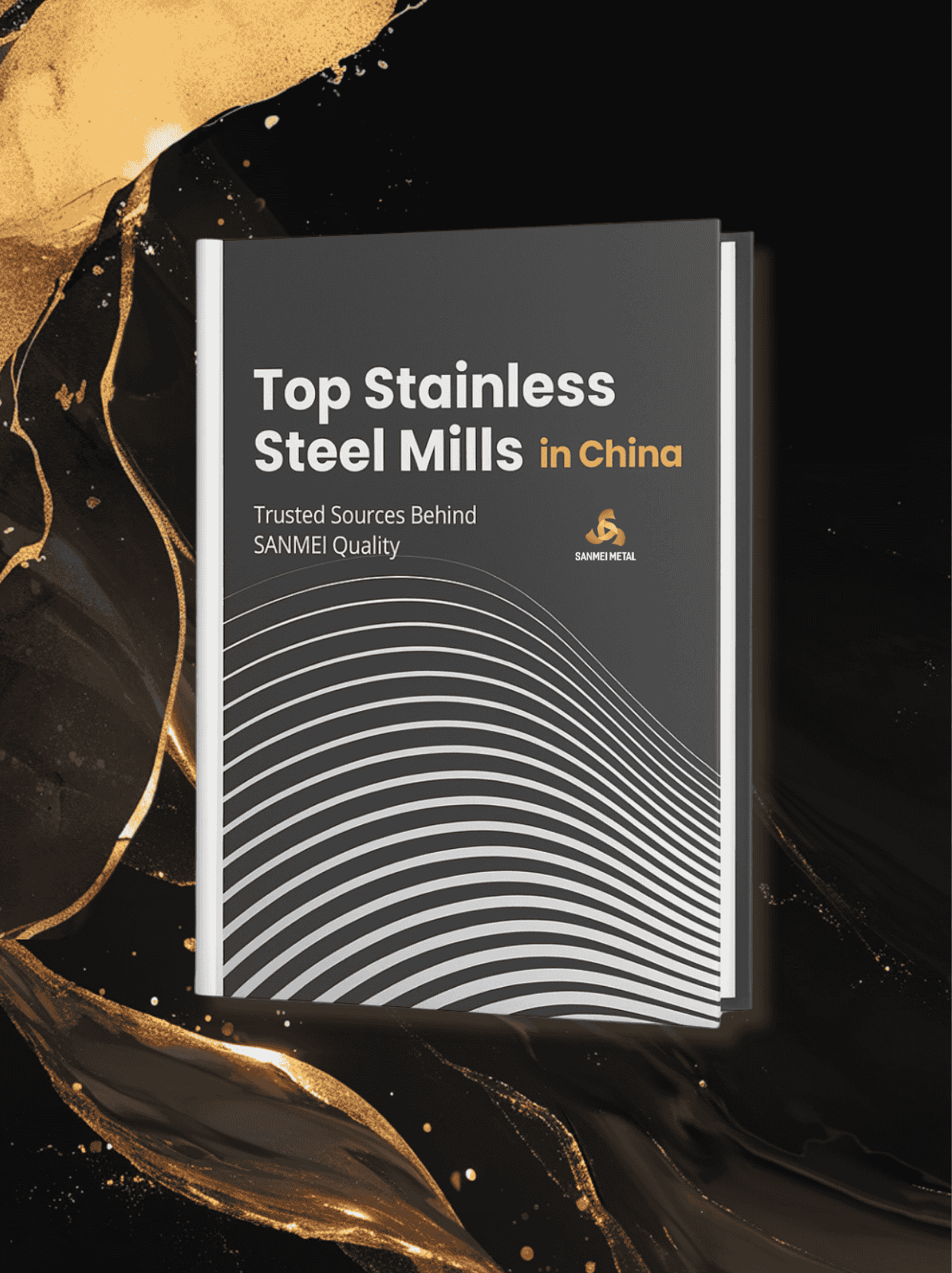
احصل على حر الوصول: ملف مصنع الصلب #1 في الصين
موجه نحو المشتري: مطابقة المطاحن حسب الدرجة/اللمسة النهائية/العرض والسمك/التطبيق
باووتسينغشانليسكوتيسكو


ملخص
الفولاذ المقاوم للصدأ 420، المعروف باسم S42000، هو سبيكة مارتنسيتية قابلة للتصلب تتميز بمتانتها وصلابتها المعززة مقارنةً بأنواع الفولاذ المقاوم للصدأ الأخرى مثل 410 و416. يحتوي على ما لا يقل عن 12% من الكروم لمقاومة التآكل ومحتوى كربون أعلى، مما يزيد من مقاومته للتآكل ويسمح له بتحقيق صلابة روكويل تصل إلى 50 HRC بعد المعالجة الحرارية. يتميز هذا الفولاذ بمرونة جيدة في الحالة الملدنة، ولكن تقل قابليته للتشغيل الآلي بمجرد أن يتجاوز التصلب 30 HRC. على الرغم من مقاومته الجيدة للتآكل، وخاصة عند التقسية والتلميع، إلا أنه ليس بنفس مقاومة الدرجات الأوستنيتية الشائعة ويحد منه فقدان المرونية عند درجات حرارة تحت الصفر وفقدان القوة عند درجات حرارة مرتفعة بسبب الإفراط في المعالجة. تشمل التطبيقات الشائعة البطانات، وأدوات طب الأسنان والجراحة، وأجزاء المضخات، ومكونات الصمامات، والأعمدة. لا ينصح باستخدامه فوق درجات حرارة التلطيف بسبب انخفاض الخواص الميكانيكية، ومن الممكن إجراء اللحام باستخدام التقنيات الصحيحة.
الخصائص العامة
الفولاذ المقاوم للصدأ 420 هو صنف مارتنسيتي عالي الكربون، يتميز بتوازن بين الصلابة ومقاومة التآكل. وهو معروف بصلابته العالية ومقاومته للتآكل، بالإضافة إلى مقاومته المتوسطة للتآكل. يتكون الفولاذ من الكربون (C: 0.15-0.40%)، والكروم (Cr: 12.0-14.0%)، وعناصر أخرى بكميات أقل مثل المنغنيز (Mn)، والسيليكون (Si)، والفوسفور (P)، والكبريت (S).
التطبيقات
يُستخدم الفولاذ المقاوم للصدأ 420 في مجموعة متنوعة من التطبيقات التي تتطلب القوة والمتانة، مثل أدوات المائدة والأدوات الجراحية والعدد. كما يُستخدم في الآلات الدقيقة، والمحامل، والمعدات الكهربائية، والأدوات، ومركبات النقل، والأجهزة المنزلية، وأدوات الطعام.
مقاومة التآكل:
على الرغم من أن الفولاذ المقاوم للصدأ 420 يتميز بمقاومة جيدة للتآكل، خاصةً عند تقسيته وتلميعه، إلا أنه ليس بنفس مقاومة الدرجات الأوستنيتية الشائعة. وتضعف مقاومته للتآكل في درجات حرارة دون الصفر وفي درجات حرارة مرتفعة بسبب الإفراط في المعالجة الحرارية.
مقاومة الحرارة:
يقتصر نطاق التشغيل المفيد للفولاذ المقاوم للصدأ 420 على فقدانه للصلابة عند درجات حرارة تحت الصفر وفقدانه للقوة عند درجات حرارة مرتفعة بسبب الإفراط في المعالجة.
قابلية التصنيع:
من السهل نسبيًا تصنيع الفولاذ المقاوم للصدأ 420 في الحالة الملدنة، ولكن التصنيع يصبح أكثر صعوبة بمجرد أن يصل إلى درجة صلابة أعلى من 30 HRC.
اللحام:
لا يعد اللحام أمرًا شائعًا بالنسبة لهذا السبائك بسبب خصائص التصلب الخاصة به، ولكن من الممكن القيام بذلك باستخدام التقنيات الصحيحة والمعالجة الحرارية بعد اللحام لمنع التشقق.
العمل الساخن:
يمكن أن يؤدي التشغيل الساخن للفولاذ المقاوم للصدأ 420 إلى تحسين متانته ومقاومته للتآكل.
العمل البارد:
يمكن أن يؤدي العمل البارد إلى زيادة صلابة الفولاذ وقوته مع تحسين جودة سطحه ودقة أبعاده.
التلدين:
يتم استخدام التلدين لتليين الفولاذ وتحسين قابليته للتصنيع وإعداده لمزيد من عمليات المعالجة الحرارية.
التلطيف:
يتم استخدام التلطيف لتقليل الهشاشة والضغوط الداخلية بعد التصلب.
التصلب:
يمكن تقوية الفولاذ المقاوم للصدأ 420 لتحقيق مستويات صلابة عالية من خلال عملية التسخين والتبريد السريع (الإطفاء).
| ملكية | قيمة |
|---|---|
| كثافة | 7.74 جم/سم³ |
| معامل المرونة | 200 جيجا باسكال (29 × 10^6 رطل لكل بوصة مربعة) |
| معامل التمدد الحراري | 10.3 ميكرومتر/متر·درجة مئوية (5.7 ميكرومتر/بوصة·درجة فهرنهايت) |
| الموصلية الحرارية | 24.9 واط/متر·كلفن (14.4 وحدة حرارية بريطانية/قدم·ساعة·درجة فهرنهايت) |
| الحرارة النوعية | 460 جول/كجم·كلفن (0.11 وحدة حرارية بريطانية/رطل·درجة فهرنهايت) عند 0-100 درجة مئوية (32 إلى 212 درجة فهرنهايت) |
| المقاومة الكهربائية | 0.55 ميكرومتر عند 20 درجة مئوية |
ملكية | قوة الخضوع، الحد الأدنى (ksi) | قوة الشد، الحد الأدنى (ksi) | الاستطالة، الحد الأدنى (%) | الصلابة، الحد الأقصى (Rb) |
420 | 345 (50) | 655 (95) | 25 | 321 مدرسة هارفارد للأعمال |
| درجة | الكربون (C) | المنغنيز (Mn) | السيليكون (Si) | الفوسفور (P) | الكبريت (S) | الكروم (Cr) | النيكل (Ni) | الموليبدينوم (Mo) | الحديد (Fe) |
| 420 | 0.15 - 0.40% | ≤1.00% | ≤1.00% | ≤0.040% | ≤0.030% | 12.0 - 14.0% | ≤0.75% | ≤0.50% | توازن |

يتميز الفولاذ المقاوم للصدأ 420 بأداء استثنائي في البيئات الرطبة أو القاسية، حيث يقاوم الصدأ ويطيل عمر المنتج.

يتميز SS420 بقوة عالية، مما يجعله مناسبًا للتطبيقات التي تتطلب ضغطًا عاليًا واستخدامًا متكررًا، مثل الأدوات والمعدات الطبية.

يتميز الفولاذ المقاوم للصدأ 420 بسطح أملس لا يتراكم عليه الأوساخ بسهولة، مما يجعله سهل التنظيف والصيانة، مما يجعله مناسبًا جدًا لبيئات معالجة الأغذية والطبية.

| يكتب | العرض (مم) | الوزن (طن متري) | السمك (مم) | ||||
| ملف 420 | 1000، 1219، 1240، 1500 أو حسب الطلب | 3-10 | 0.15-3.0 | ||||

| يكتب | العرض (مم) | الطول (مم) | السمك (مم) | |||||||||
| 420 ورقة | 1000، 1219، 1240، 1500 أو حسب الطلب | 2000, 2438, 2500, 3000, 3048 | 0.3-3.0 | |||||||||
نحن ملتزمون بتقديم أفضل وأعلى جودة من الخدمة لعملائنا لضمان رضا عملائنا.









معتمدة من قبل مؤسسات مرموقة وملتزمة بالالتزام بالمعايير الدولية في كل جانب.




تعتبر آراء العملاء هي الانعكاس الأكثر أصالة لجودة الشركة.
اطلع على المزيد من المراجع الفنية من Sanmei Metal فيما يتعلق بملفات الفولاذ المقاوم للصدأ وألواح الفولاذ المقاوم للصدأ.
المقر الرئيسي:
مركز الإبداع، رقم ١٤٢، طريق يوهي، بلدة ليكونج، منطقة شوند، مدينة فوشان، مقاطعة قوانغدونغ، الصين. ٥٢٨٣١٥
مصنع: مدينة لييوان اللوجستية، بلدة تشينكون، منطقة شوند، مدينة فوشان، مقاطعة قوانغدونغ، الصين. 528313
قاعدة الدعم المحلية في أستراليا: (ياتالا، كوينزلاند) - قادم في عام 2026